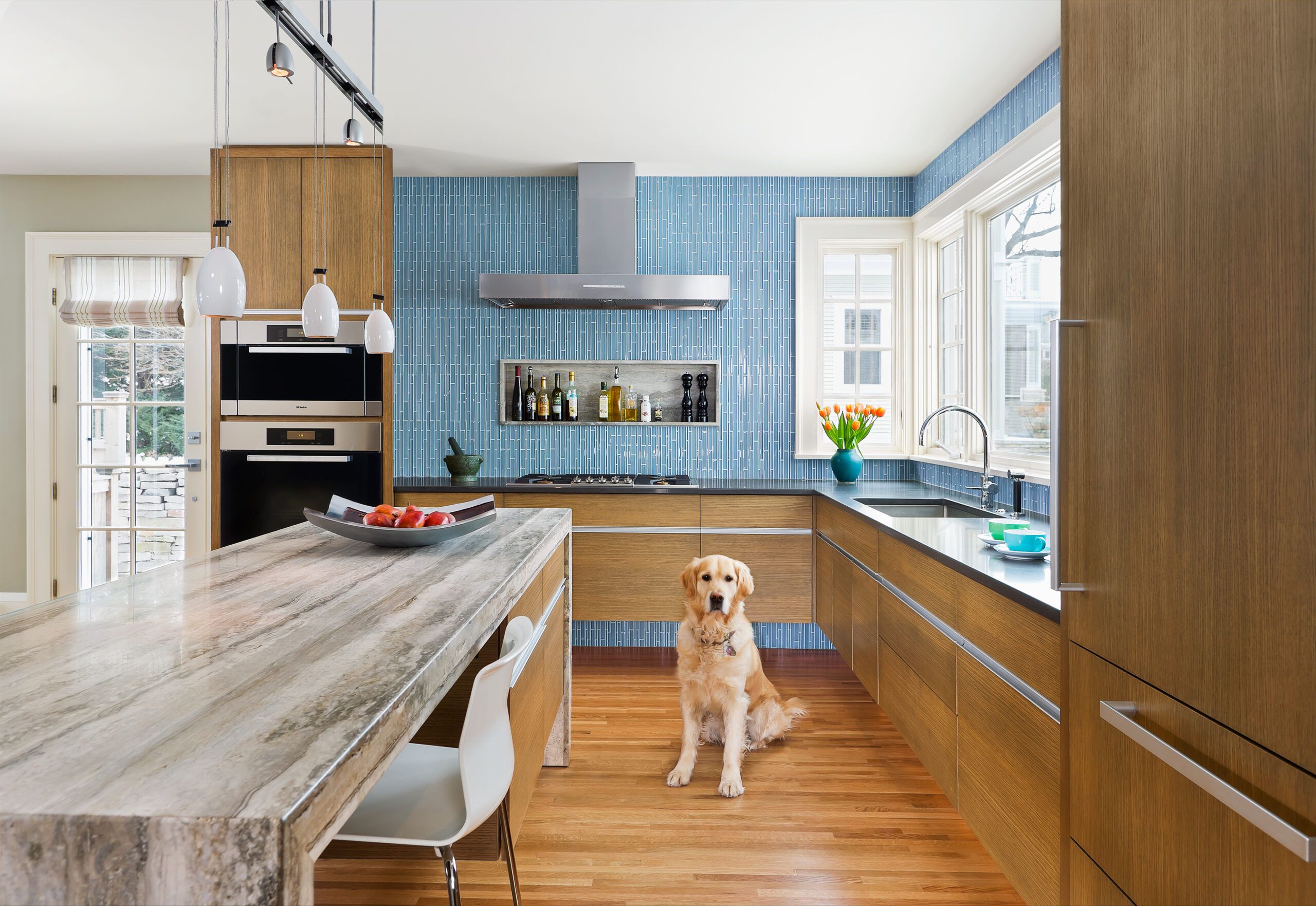Welcome to our comprehensive guide on granite countertops for homeowners! In this article, you’ll discover granite’s numerous benefits, explore its wide range of colors and designs, learn about cost considerations, and understand how to properly care for this beautiful natural stone. This guide provides all the information you need to decide whether granite is the right choice for your home renovation project, whether for your kitchen or bathroom.
Why Granite Countertops?
Granite countertops are a top pick for homeowners due to their durability and resilience. With its tough nature, granite is perfect for busy kitchens and bathrooms. Its heat-resistant properties allow for the direct placement of hot pans without causing damage. Furthermore, granite boasts scratch and chip resistance, ensuring its beauty lasts for years. With proper upkeep, these countertops can stand the test of time, making them a smart investment for any household.
About the Material
What is Granite? Granite is an igneous rock primarily composed of quartz and feldspar, formed by the cooling of molten materials deep within the Earth. It’s renowned for its durability and is one of the toughest surfaces. Its light color and visible grains make it visually striking. When choosing granite, you should visit a stone yard to select your own piece to avoid surprises.
Top Granite Colors in 2024
Granite countertops go beyond mere functionality; they epitomize style and sophistication. With a wide array of colors and patterns, you can craft a space that reflects your individuality. Among these options, here is the list of the top 10 most popular granite colors for 2024.
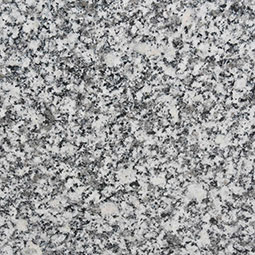
Crystal Gray Granite
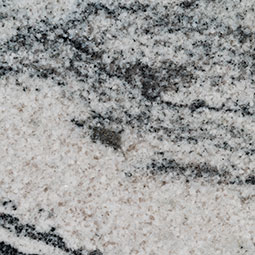
Silver Cloud Granite
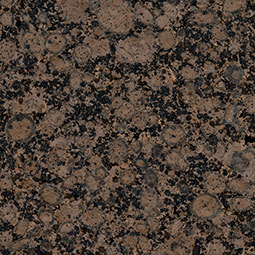
Baltic Brown Granite
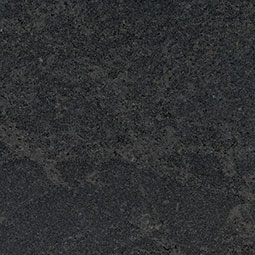
Nero Mist Granite
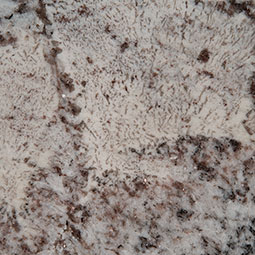
Mystic Spring Granite
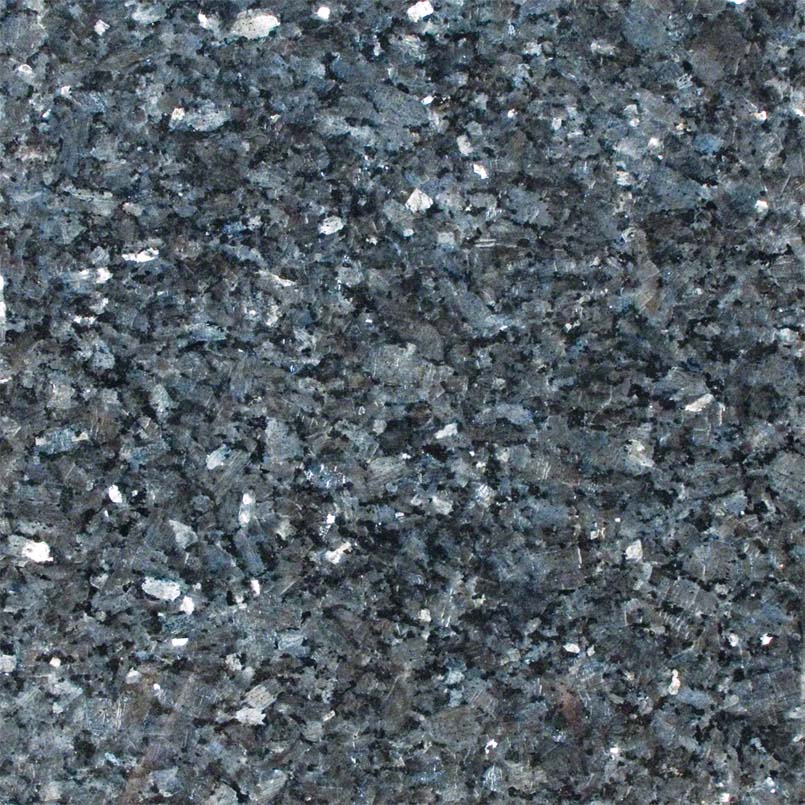
Blue Pearl Granite
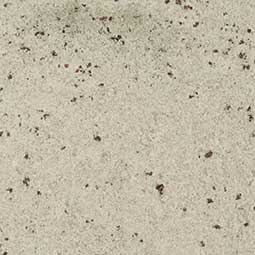
Colonial White Granite
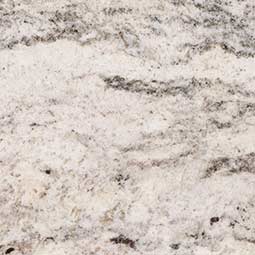
White Valley Granite
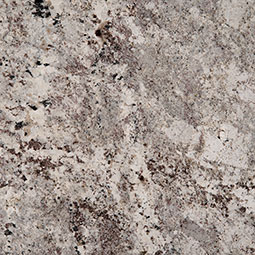
Alaska White Granite
Kitchen Design Ideas and Styles with Granite Countertops
Warm and Inviting
Choose warm-toned granite countertops like Ivory Brown Granite to infuse your kitchen with coziness and warmth. Pair them with rich wood cabinetry and earthy tones to create a welcoming atmosphere. Add pops of color with vibrant accessories like rugs or artwork to enhance the inviting feel of the space.
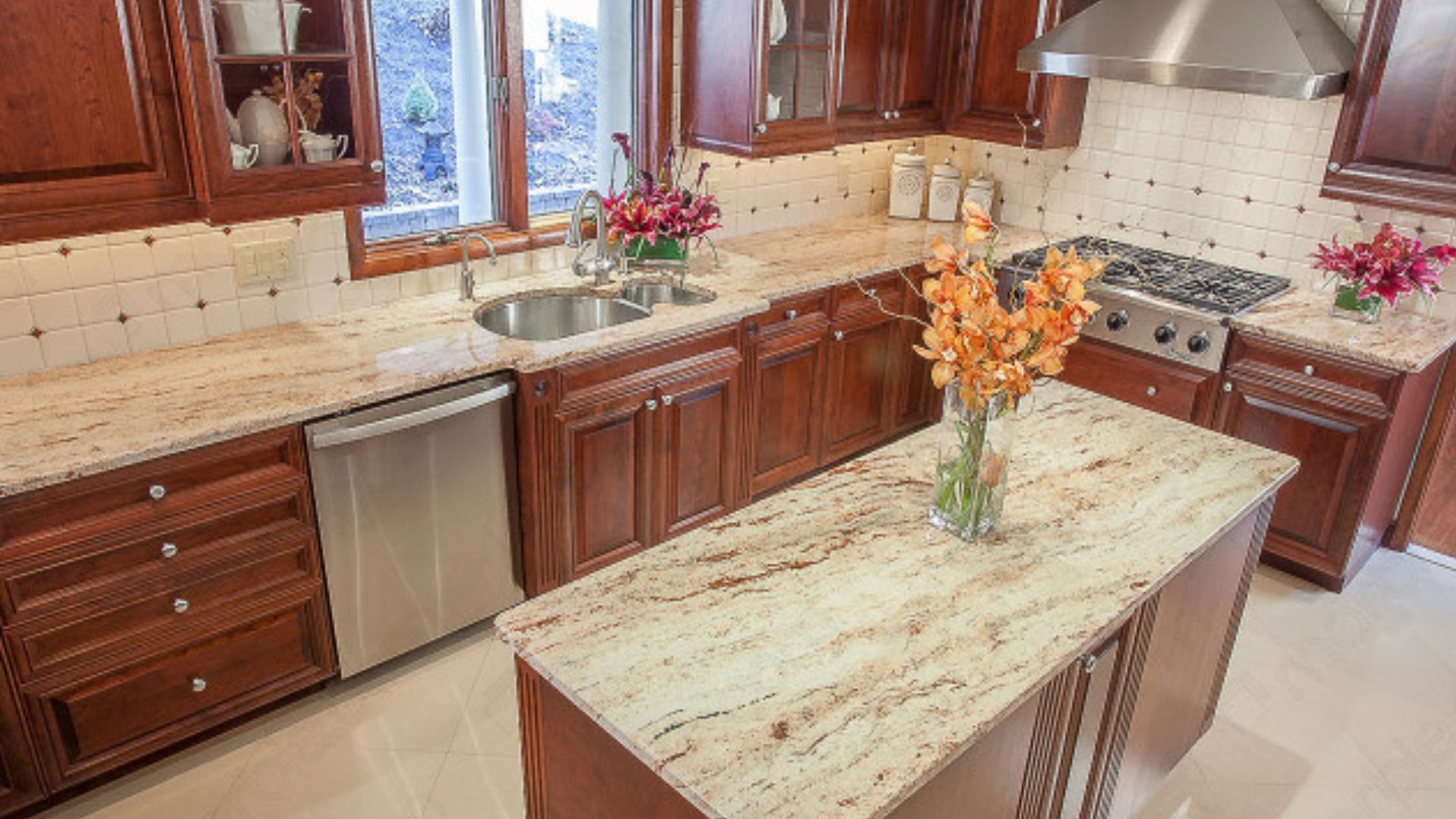
Ivory Brown Granite
Classic Elegance
Pair black granite countertops with white cabinetry and stainless steel appliances for a timeless and sophisticated look. The dark granite adds depth and contrast to the bright kitchen, creating a stunning visual impact. Sleek hardware and minimalist decor complete the design for a classic yet modern aesthetic.
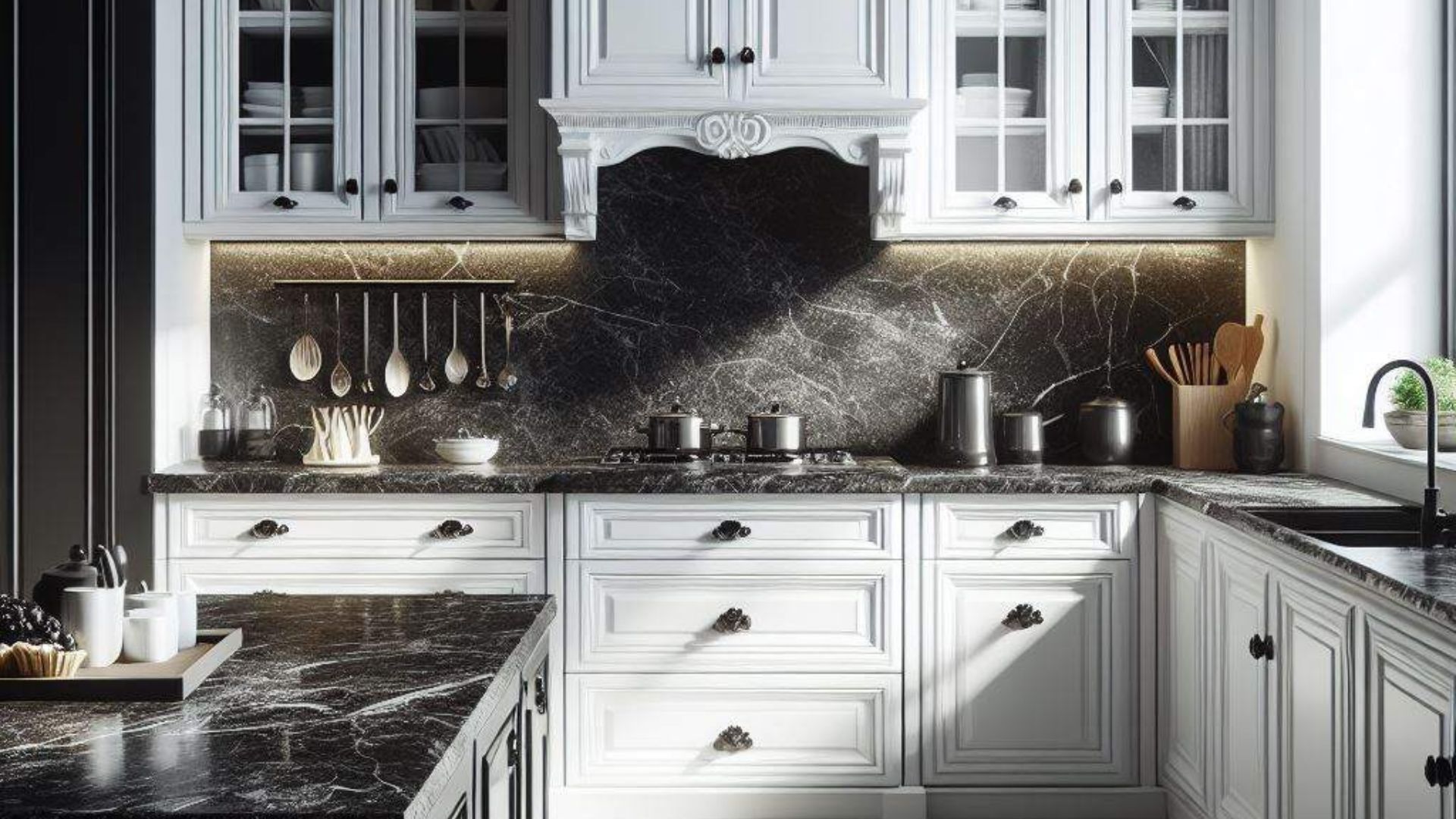
Agatha Black Granite
Rustic Charm
Embrace the rustic charm of granite countertops with varieties like Colonial Gold Granite, featuring natural veining and texture. Pair them with distressed wood cabinetry and vintage-inspired fixtures for a cozy farmhouse feel. Add rustic elements like open shelving and woven baskets to complete the charming look.
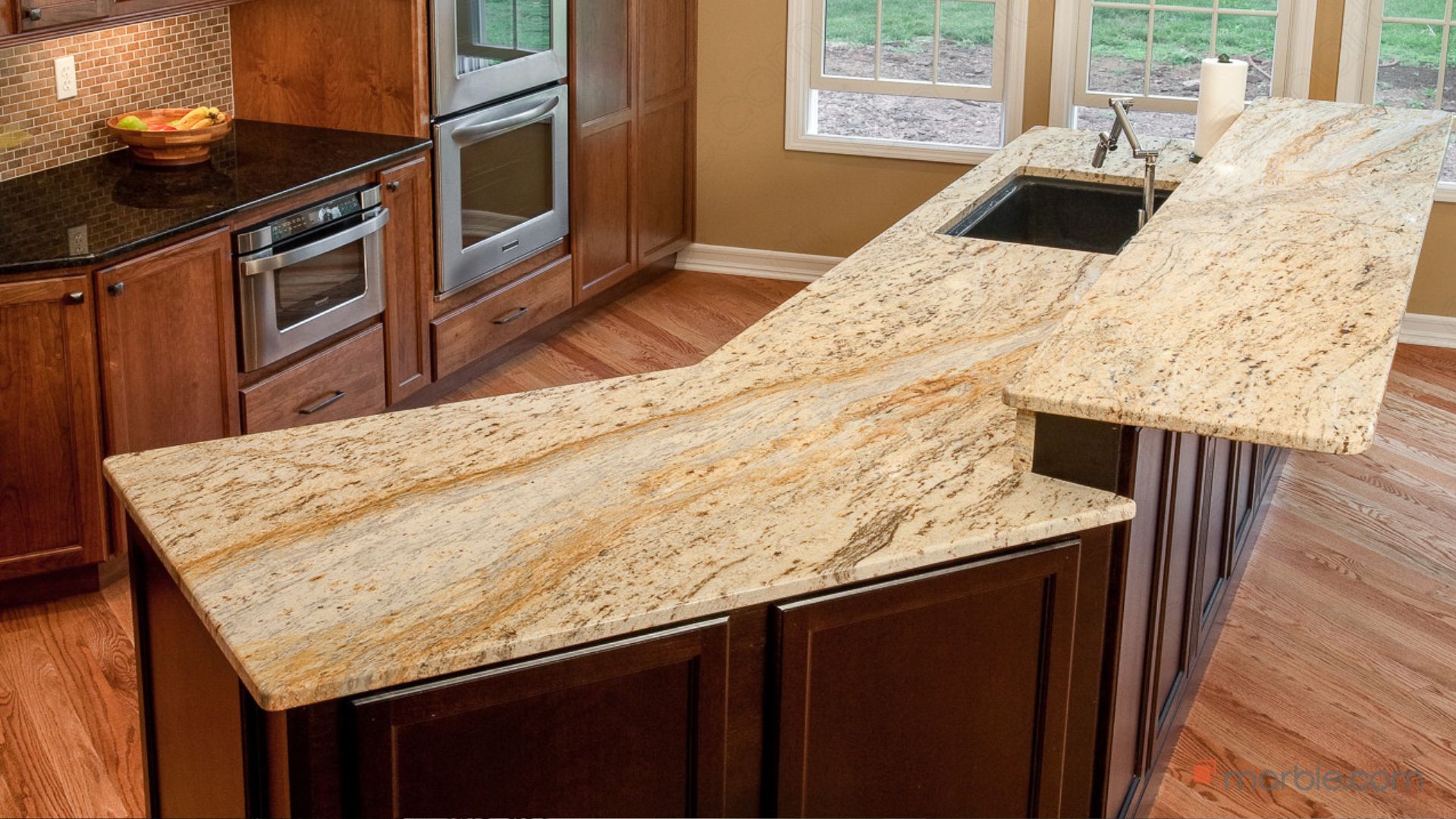
Colonial Gold Granite
Granite Countertop Installation Cost
When planning for granite countertop installation, homeowners can anticipate spending between $2,250 and $4,500 on average for a typical home renovation project. Granite countertops range from $40 to $100 per square foot.
According to Angi, the average cost of a remodeling project for labor and materials to install granite countertops is around $3,250. Avergae cost per square feet is $70 per Home Depot’s Countertop Installation Cost Guide.
However, the total cost can vary significantly based on factors such as the type of granite and its form, ranging from $5 to $60 per square foot. Additionally, professional fabrication and installation services may cost $35 to $85 per hour.
Additional Expenses Related to Granite Countertop Installation
Backsplash material, including granite, typically costs $20 to $46 per square foot, including labor. Edge treatments, such as half bullnose or bevel edges, may cost between $30 to $60 per linear foot. Sink cutouts, essential for installing sinks, can range from $200 to $500 per cutout. Plumbing services required during installation average around $550.
Additionally, old countertop removal and haul-away costs range from $8 to $13 per square foot, with an average of $9 per square foot. These details are crucial for accurate budgeting for a granite countertop installation project.
Granite Countertop Cost Calculator
The granite countertop cost calculator considers all the essential factors to estimate your project accurately. You can calculate the installation cost for your granite countertops with just a few clicks.
Granite vs. Quartz and Marble
When comparing granite countertops to quartz and marble, several factors come into play:
Quartz Countertops
Quartz Countertops are engineered and non-porous, meaning they don’t require sealing. However, they aren’t as heat-resistant as granite and offer a more uniform look.
Marble Countertops
Marble Countertops are known for their unique veining and luxurious feel but are more porous and softer than granite, making them more prone to staining and scratching.
Granite Countertops Maintenance and Care
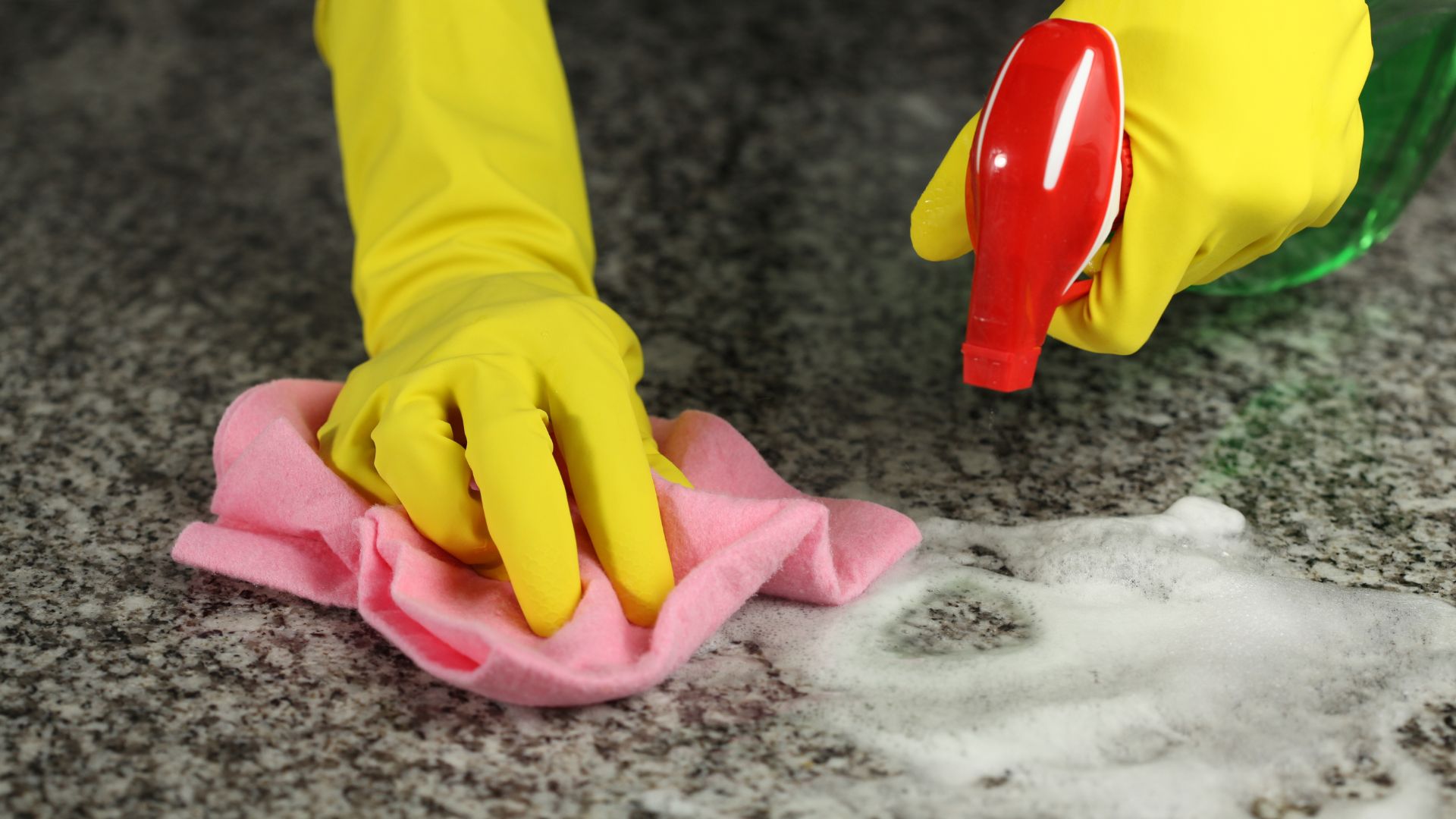
Granite Countertops Cleaning and Maintenance
Taking care of your granite countertop is essential to maintain its beauty and durability for years. Fortunately, granite countertops are relatively easy to care for, requiring minimal effort to keep them looking pristine. To clean your granite countertop, use a mild detergent and water to wipe away any spills or messes. Avoid harsh chemicals or abrasive cleaners, as these can damage the sealant and dull the countertop’s surface over time.
Additionally, it’s important to blot up spills immediately to prevent staining, especially from acidic substances like fruit juices or cooking oil. Coasters and cutting boards can help prevent scratches and damage from hot pots or pans.
While granite is heat-resistant, it’s still best to use caution and avoid placing hot items directly on the surface. By following these simple do’s and don’ts, you can ensure that your granite countertop remains in top condition for years.
Do’s and Don’ts for Granite Countertop Care
|
|---|
| Do’s: |
| – Blot up spills immediately |
| – Use a soft cloth or sponge to clean |
| – Use coasters for drinks |
| – Use cutting boards for chopping |
| – Apply a high-quality sealer annually |
| Don’ts: |
| – Avoid using generic cleaning products |
| – Avoid using ammonia, vinegar, or citrus cleaners |
| – Avoid using grout cleaners or bathroom tub & tile cleaners |
| – Avoid standing or sitting on the countertop |
| – Avoid keeping toiletries and liquids directly on the countertop |
Sealing Granite Surfaces
Sealing granite surfaces is a crucial step in maintaining their beauty and durability. Contrary to popular belief, not all natural stones require sealing, including many varieties of granite. Perform a simple water absorption test to determine if your granite countertops need sealing. Place a small puddle of water on the countertop, observe how long it takes to absorb, and leave a stain. If absorbed within 10 minutes, sealing is necessary. Factors like granite color and type of sealer used influence the frequency of resealing. Lighter granite colors may require more frequent sealing compared to darker ones. Applying sealer unnecessarily can result in unsightly damage, so it’s essential to know when resealing is needed.
Polishing Granite Countertops
Polishing granite countertops enhances their natural shine, achieved through rigorous cutting and processing at the quarry. Unlike chemically applied substances, the shine on granite surfaces is inherent and can be further enhanced with topical polishes. However, these polishes cannot repair damaged or dull surfaces caused by factors like harsh cleaning products or acidic spills.
How to Repair Granite Countertops?
Despite their durability, accidents can still cause damage. However, a professional stone repair specialist can often restore the countertop. The repair needed depends on the damage’s extent and type. Minor scratches or chips might be buffed out or filled with epoxy. Deeper scratches or cracks may require grinding and polishing. It’s crucial to avoid DIY repairs, as they can worsen the damage.
Granite Kitchen Backsplashes
Granite kitchen backsplashes offer a timeless and organic look, much like marble and limestone. They come in various colors and can be installed with minimal grouting, providing a smooth surface with fewer visible seams. Although a 4-inch backsplash design may seem outdated compared to full-tile backsplashes, it remains popular. Many kitchen designers now favor the modern and trendy full-tile design. However, granite backsplashes make cleaning easier over time, as splashes from cooking and cleaning can be easily wiped off with soapy water, adding to their appeal and practicality.
Granite vs. Quartz

Granite Countertops
Versus

Quartz Countertops
While granite is a natural stone with pores that can absorb stains, quartz is engineered and non-porous due to its resin composition. This makes quartz more resistant to stains and cracks than granite. However, both materials can be damaged by excessive heat.
Granite vs. Marble

Granite Countertops
Versus
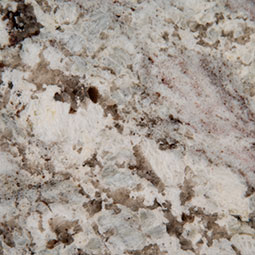
Marble Countertops
When it comes to longevity, granite countertops are a clear winner. Their hardness and durability make them a reliable choice that can withstand the test of time. Marble, while elegant, is softer and less heat-resistant than granite.
It’s important to note that marble can easily etch, especially in kitchen environments or outdoor settings, which may affect lifespan. This information instills trust in the durability of granite, making it a reliable option for your countertop needs.
Granite vs. Dekton

Granite Countertops
Versus
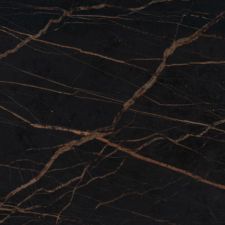
Dekton Countertops
Both materials are resistant to heat, but granite needs regular sealing to avoid staining. Dekton’s non-porous surface makes it easy to clean and maintain, which means that Dekton countertops may require less upkeep over time compared to granite.
Bathroom Vanity Tops
Granite is an ideal natural stone for bathroom vanities and kitchen countertops due to its hard-wearing nature. It resists stains and heat, making it perfect for bathroom use. Additionally, granite vanity tops serve as stunning focal points in any bathroom, enhancing its overall aesthetic appeal. Industry standards typically recommend a thickness of 3/4 inch (or 2 centimeters) for granite bathroom vanity tops.
Best Practices for Buying Granite Countertops
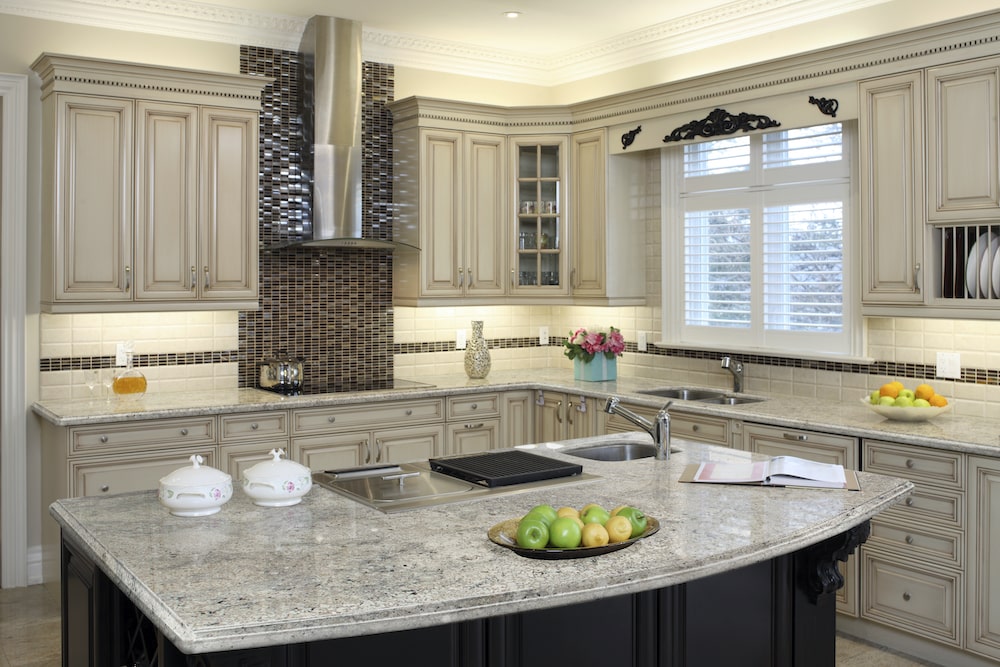
Here are the top five tips for choosing the right granite countertop installation for your kitchen.
1. Inspect Slabs Before Buying
Ensure you see the granite slab you’re purchasing to match colors and veins accurately. Since granite is a natural stone, variations exist between slabs.
2. Leave Fabrication to Professionals
Granite countertop fabrication requires specialized machinery like CNC, making it unsuitable for DIY projects. Due to its heavy weight and potential dangers, professional installation is not only recommended but necessary. This ensures your safety and gives you confidence in the quality of the installation.
3. Choose a Reputable Supplier
Select a granite shop with a proven track record, ample experience, and modern technology. Check reviews, referrals, licenses, and qualifications to ensure quality service.
4. Consider Size and Style
Light-colored granite suits small spaces, while dark hues complement larger areas. Match the edge profile of your countertops with the style of your cabinets for a cohesive look.
5. Balance Quality and Price
Don’t solely focus on price; prioritize quality and durability. Granite slabs are uniform but costly, while tiles are budget-friendly but may require more maintenance.
Choosing Your Granite Countertop
It would be best to consider the following factors when selecting a granite countertop for your kitchen.
Granite Countertop Facts
- Thickness, Overhangs, and Edges: Standard thickness varies by location, and the cost increases with thickness. Standard overhangs are 1-1.5 inches, but larger ones may need additional support. Edge treatments range from straight to beveled and rounded.
- Forms: Granite counters come in slabs or tiles. Slabs provide a solid, seamless look, while tiles offer more installation flexibility and a lower cost.
- Finishes: Choose from polished (smooth and reflective), honed (smooth but not shiny), or leather (textured like leather) finishes, each offering different aesthetic and functional benefits.
The Bottom Line
Granite countertops are not just a practical choice for your kitchen countertops; they invest in your home’s value and aesthetic appeal. Their durability, combined with their natural beauty and variety of options, make them ideal for any kitchen renovation.
Whether baking, hosting guests, or simply enjoying your kitchen space, granite countertops offer a timeless, high-end look and an excellent, smooth surface that’s ideal for any culinary activity. By choosing granite, you’re opting for a countertop that is as functional as it is beautiful, ensuring your kitchen remains the heart of your home for years to come.
